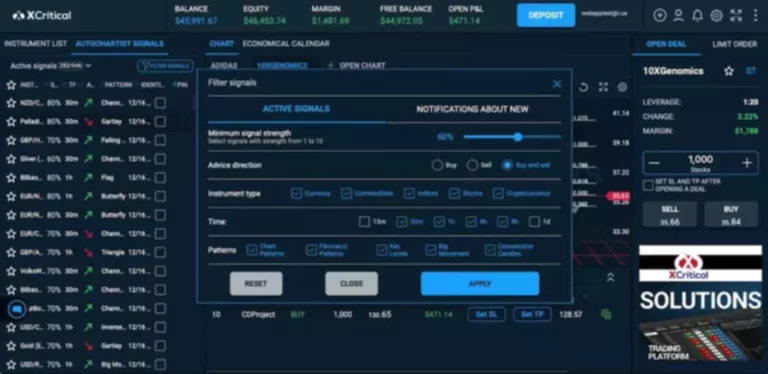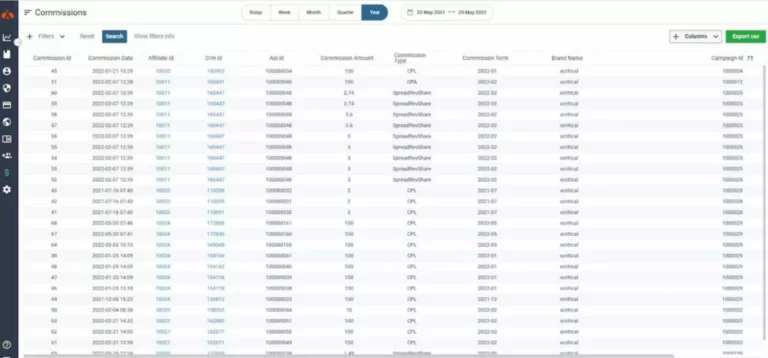Content
It funds projects that seek to minimize carbon emissions, restore ecosystems, and encourage environmentally friendly activities. As regenerative finance blockchain we struggle to deal with global warming and limited natural resource supplies, ReFi plays a crucial role in shaping a sustainable future. Switzerland-based Toucan’s infrastructure platform turns carbon credits and other assets good for the environment into tokens on a blockchain.
The Potential Risks of Regenerative Finance
Regenerative Finance, also known as ReFi, is a brand-new and cutting-edge financial solution that seeks to address many of the problems that traditional banking raises. It offers a choice for those who want to invest or borrow money without going through a bank. ReFi allows people to communicate their financial decisions clearly and concisely using language appropriate for an 8th-grade reading level for a 13-year-old. By making funds readily available when needed, ReFi promotes https://www.xcritical.com/ greater monetary circulation in our communities. Individuals and businesses investing in Regenerative Finance projects receive tax incentives or benefits in some regions.
What is regenerative finance (ReFi)?

In regenerative practice, places are described as having a Payment gateway unique bio-cultural identity and potential. ReFi has the potential to deal with all aspects of restoring our economies into localised living entities. It uses place-based tokenomics that foster their thriving capacities within a collective thrivability pattern.
- Because they are more interested with financial decentralization and inclusion, DeFi platforms may not necessarily focus on environmental regeneration.
- Regenerative Finance (ReFi) is a burgeoning field aimed at restructuring the economic landscape to harmonize financial systems with ecological and societal well-being.
- Incorporating Pili’s bio indigo into its regenerative cotton initiatives, Citizens continues to lead the charge in reducing environmental impact.
- Communities across the globe could make use of DAOs (decentralised autonomous organisations) for community activism, finance and social projects.
- At IdeaSoft, we believe that 2024 will be the year that ReFi gains more mainstream attention and adoption, proving that cryptocurrencies can directly impact the real world.
Blockchain companies investing in ReFi initiatives
An emerging idea is a digital carbon market, where the voluntary carbon market is replaced using blockchain networks. The idea is to bring more transparency, availability, and even liquidity to the carbon credit market. Regenerative finance can also help preserve cultural heritage artifacts and historical records by using blockchain to store permanent records. Non-fungible tokens (NFTs) can be used to create verifiable and immutable records on the blockchain for these artifacts, making them an unchangeable part of history. Traditional finance approaches the very dire problems facing civilization as we know it too myopically. There are systemic failures occurring across all sectors of society, and the easiest way to have somewhat of a smooth transition is to transition to a regenerative financial system.
Regenerative Finance — often shortened to “ReFi” — is an inclusive, transparent, and accessible alternative to conventional financial systems. ReFi opens avenues to embed care for communities, living ecosystems, and our environment into the roots of our economic system. In a regenerative financial system, economic activity benefits all of the system’s living participants, instead of unsustainably extracting resources, unfairly distributing profits, and ignoring the value of living ecosystems. Although still in its early stages, ReFi has the potential to fundamentally transform how we use money and finance as tools to help life thrive on our planet.
Smart contracts, a hallmark of blockchain technology, enable the creation of decentralized finance (DeFi) platforms, allowing for the seamless execution of ReFi investment strategies. Built on blockchain technology, Web3 fosters a peer-to-peer network of interconnected applications, services, and platforms. As a result, this decentralized nature ensures greater privacy, security, and user control over data and digital assets. Nevertheless, the effectiveness of traditional carbon trading mechanisms has often been undermined by issues of transparency and integrity. Against this backdrop, the innovative landscape of Web3 offers a promising alternative.

Blockchain’s transparency and immutability ensure that the terms of decentralized green bonds are clear and enforceable through smart contracts. These digital contracts facilitate trustless interactions by automatically executing the agreed-upon terms such as interest payments and principal repayment on maturity. Describing their activity as ‘DeFi that defies climate change’, KlimaDAO have set up their own cryptocurrency token called KLIMA which is backed by real-world carbon assets. This means that when someone purchases this token via a cryptocurrency exchange, they’re funding the removal of a defined amount of CO2 from the atmosphere. Web3 technologies offer multiple opportunities for exacting change across the world from a financial perspective. These include decentralisation and the democratisation of financial services, removing geographic barriers, improving accessibility, and enabling community management of financial systems.
KLIMA token holders benefit from rewards from the KlimaDAO just by virtue of their token holdings when others buy into the organisation. There is then an incentive to invest and hold tokens, which in turn helps to reduce carbon dioxide in the atmosphere – a pure manifestation of ReFi in action. Web3 ignites a modern-day Renaissance, merging diverse ideas to address our planet’s challenges. The principles and practices of ReFi provide a stark contrast to those of Traditional Finance (TradFi). While both models share the aim of facilitating economic transactions and growth, their methodologies, guiding philosophies, and ultimate objectives often diverge significantly. Understanding why ReFi is important involves recognizing its ability to promote change, its significance in today’s socioeconomic climate, and its larger benefits.
In 2015, the economist John Fullerton coined “Regenerative Capitalism” stating eight principles that are the foundation of any economic system in order to build a stable and healthy foundation. Regenerative systems leverage regenerative finance to achieve robust properties of growth. In extractive systems, resources are depleted and the system loses capacity over time. In sustainable systems, resource availability is not depleted over time and the system is steady. Regenerative systems must grow over the long term and must, therefore, be resilient and cannot be extractive. ReFi gives social significance and inclusivity first priority and provides financial solutions that work with economic and social inequality.
Giving these companies the money they need to succeed helps to address market failures. ReFi incentivizes companies to aim for favorable social and environmental outcomes, a quality largely absent from conventional free-market economic structures. Businesses and organizations interested in Regenerative Finance can participate by aligning their investments with sustainable and socially responsible projects. They can collaborate with impact investment platforms, partner with environmental and social organizations, or establish their own regenerative initiatives. The concept of a regenerative economy is an evolving one, tracing its roots deep into the intellectual soil tilled by economists and philosophers over the past century.
Triodos Bank is an outstanding example of a banking institution that values ethics in its operations. Triodos Bank has been helpful in channeling resources toward initiatives and groups with beneficial influence on the population, the ecosystem, and culture as part of its devotion to sustainability and the welfare of society. They participate in funding renewable energy campaigns, organic farming, and social organizations. They stand out for their commitment to transparency by publicly publishing every organization they support and setting a high bar for responsibility in ethical banking. Environmental regeneration initiatives and financial investments are frequently included in ReFi. Efforts to reduce carbon emissions, rehabilitate ecosystems, and encourage environmentally friendly activities may be included.
The Toucan Carbon Pool solves the problem of price liquidity in the carbon market by taking carbon tokens (TCO2 tokens) from multiple projects and pooling them into a more liquid carbon index token. The Toucan Carbon Bridge enables users to store carbon credits as NFTs on the blockchain. Advantages include complete transparency and divisibility, and the destruction of carbon tokens on the chain is equivalent to the cancellation of carbon credits, which prevents double-counting. Regenerative finance functions more as a framework for engaging in social activities. From my perspective, this is unlikely to reshape the market but presents an opportunity for enthusiasts to leverage this functionality.
Open conversations with different parties help us understand each side’s pain points, and aid us in bridging the gap between legacy actors and new market participants. Blockchains offer a secure and public way to store and share information across a network of computers. Once information is added to the blockchain, it can’t be altered or deleted by anyone — that’s why people often say that blockchains are a “tamper-proof storage of data”.
These systems place ecological benefits and the well-being of the planet and its people at their core. Individuals can make investments directly in initiatives involving sustainability, renewable energy, and eco-friendly efforts through decentralized platforms, as well as blockchain technology. Web3 guarantees that funds go directly to environmentally beneficial projects and increases access to green investment opportunities by eliminating middlemen.